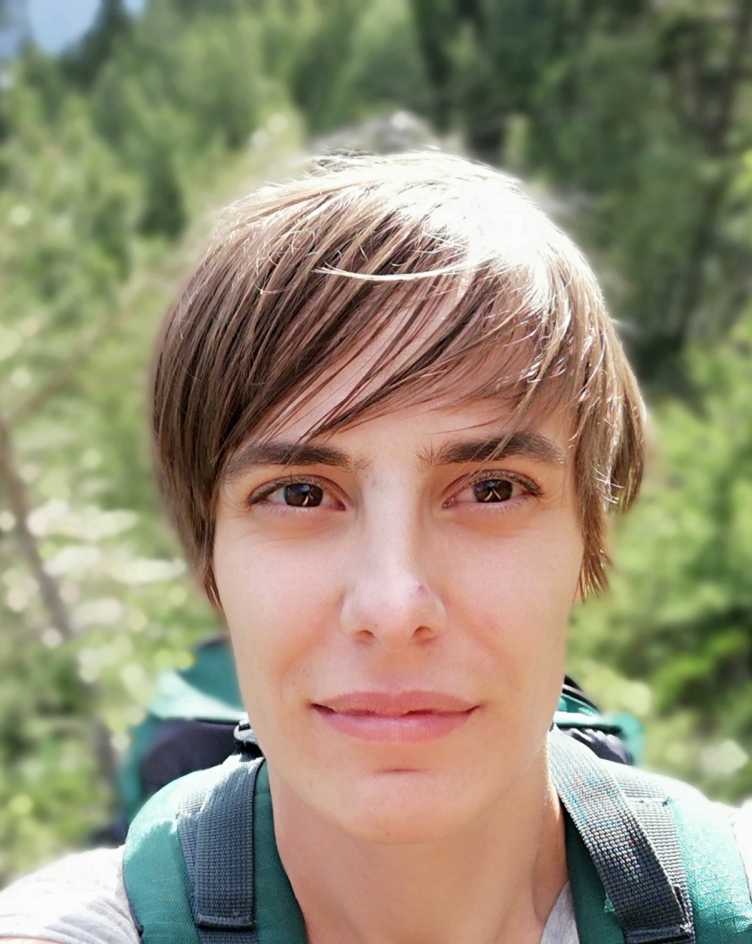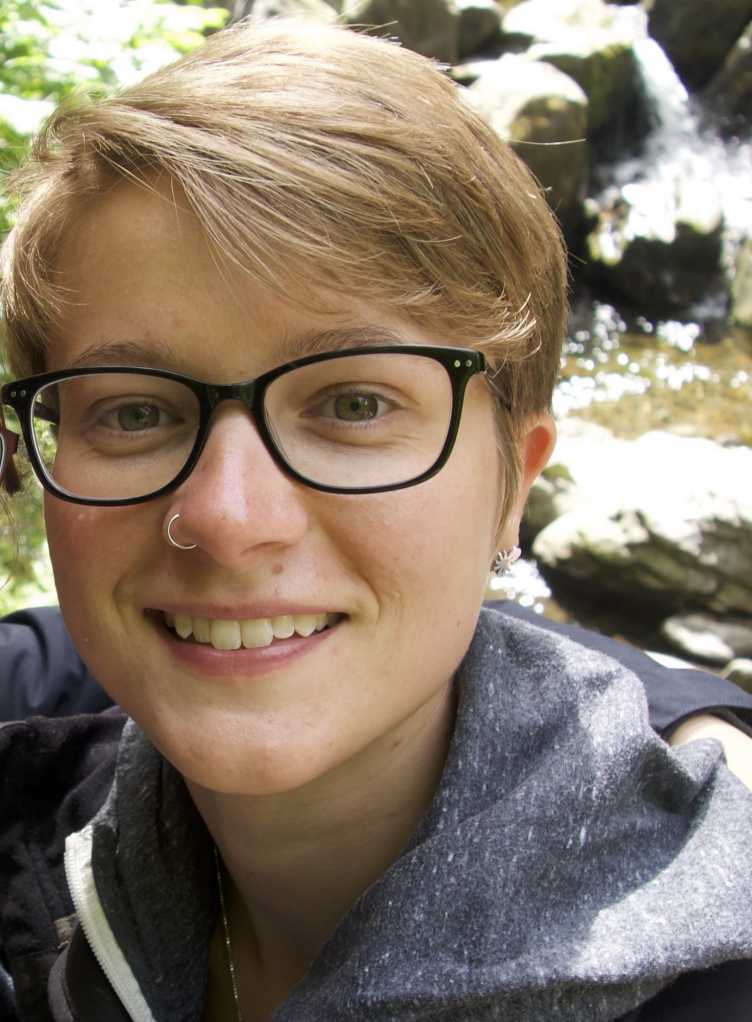Current members
Group leader

Loïc’s research is focused on understanding and modelling past and future landscape dynamic and its link to biodiversity. His research provides fundamental knowledge in ecology and evolution of landscape biodiversity patterns and uses this knowledge to improve sustainable management of natural resources.
Coordinators
Lead scientist

Camille works at the interface of the research fields of biogeography, macroecology and evolution to understand the origin of marine biodiversity, its current distribution and its possible future under climate change and anthropogenic pressures. Camille investigates the spatial and temporal dynamics of marine assemblages by accounting for species identity, phylogenetic and functional diversity as well as the trophic interactions that connect species in ecosystems.
Teaching coordinator

Fabian is a lecturer and coordinates the teaching of the ecosystems and landscape evolution group. This includes several bachelor and master courses about environmental data science, eDNA for biodiversity monitoring, spatial analysis in R and basic and advanced landscape research. He is also involved in the coordination of two massive open online courses (MOOCs) about landscape ecology and environmental DNA (eDNA).
Wet-lab coordinator

Sarah is the wet lab coordinator, who will introduce everyone to the lab. She is the reference person in the group for the metabarcoding libraries development and optimisation. Her love of nature and being outdoors changed her focus to applying her skills from biotechnologies to monitoring biodiversity.
Admin and IT staff

Ankara del Carmen Marjatshang-Chen
Ankara runs the institute secretariat for ITES and is administrative assistant for two Professorships within the Institute, including the Chair of Ecosystems and Landscape Evolution. Ankara provides day-to-day administrative support, her responsibilities include reporting to the management, handling human resources and finances, organising and scheduling events, and acting as the point of contact between employees, guests and the various ETH bodies and services.

Gilbert assists the group with server installation and administration for users, groups, mailing lists, and the network management including the security handling. He does the setup and maintenance of the websites. He is responsible for hardware procurement and handling and does the basic and user specific installations including updates with Baramundi, including handover to new end-users or to the lab. In addition, he provides the end-user support, especially fore the more difficult cases.
Scientific staff

Meret is interested in the potential of environmental DNA (eDNA) as a powerful and rapidly evolving method for monitoring biodiversity in a time of rapid ecosystem change. The possibility of taking portable handheld devices into the field to generate real time data is an exciting prospect for her. It increases the ease of access to generating data and creating scientific insights without depending on large laboratories that are often far from sampling sites. Her role is to develop and test methods that are field deployable, aiming to achieve rapid results in various environments.

Jonathan supports the group as a Laboratory technician in various projects. One of these is the BurGeoN project, which uses the characterisation of environmental DNA to investigate the relationship between geological features and the formation of lineages. As limited mountain regions have a remarkably high diversity with many young endemic and rare species.
He is responsible for a variety of tasks in the molecular laboratory including processing the environmental DNA (eDNA) samples from the DNA extraction in a cleanlab to the library preparation. As an environmental engineer and nature lover, biodiversity is a very important topic for him.

Dr. Carolina Bello is a senior scientific researcher at ETH Zürich, specializing in the role of animals in ecosystem services. Her research examines how global change alters species interactions and affects ecosystem functions, with a particular focus on carbon storage and disease control. At the EEL lab, Dr. Bello supports the BiotechQilombolo project by collecting eDNA samples in the Amazon with the active participation of local communities, helping to establish long-term biodiversity monitoring strategies. In addition, she is designing and implementing a new project to explore the role of mammals in transmitting vector-borne diseases, using iDNA sampling to uncover hidden links between wildlife and disease dynamics. By linking biodiversity conservation with ecosystem services, Dr. Bello’s research bridges fundamental ecology with policy-relevant solutions to address climate change and biodiversity loss simultaneously.
Postdoctoral researchers

external page Virginie Marques
Virginie’s research focuses on integrating molecular ecology tools via the use of environmental DNA (eDNA) to unravel the mechanisms shaping biodiversity patterns across ecosystems. Within the group, she is part of the SPI Greenfjord project, which plans to investigate the impact of melting glaciers on the marine ecosystem in Greenland fjords by relating physical properties and geochemical fluxes to biodiversity measured using eDNA metabarcoding. At the Arctic scale, she also aims at studying the spatial structure and drivers of marine food-webs properties.

Martina is interested in developing new methods for projects with an applied outcome. With her background in molecular biology she is therefore working on the CRISPeD project to help develop a CRISPR-Cas based method for rapid and efficient biodiversity monitoring via eDNA. Harnessing this novel approach should help advance real-time biodiversity and species monitoring.

external page Marie-Ange Dahito
Marie-Ange is interested in mathematical programming and algorithm development for the resolution of complex real-world optimization problems. Her experience includes mixed-variable blackbox optimization and continuous nonlinear optimization. Strongly interested in environmental issues, her current research falls within the net zero initiative and focuses on using mathematical optimization tools to favour the energy transition in Switzerland while preserving biodiversity.

Lucie's research within the ACTNOW project (external page https://www.actnow-project.eu/) focus on environmental DNA (eDNA) to monitor and assess the biodiversity of the Mediterranean Sea, offering unprecedented insights into its marine ecosystems. Lucie investigates the sanctuary effect of marine protected areas in the context of climate change and overfishing, with the goal of enhancing decision-making tools. By characterize the present marine biodiversity, her research also aims to detect new invaders and track their proliferation routes throughout the Mediterranean Sea.

Shuo’s research interests are monitoring biodiversity and ecosystem globally and improving large-scale biodiversity modeling with the combination of satellite imagery and ground data. He tries to understand the connection between land cover shift and biodiversity using Remote Sensing, Environmental DNA, and Machine Learning methods. For this, he applies Remote sensing to estimate Essential Biodiversity Variables (defined by GEO BON) and develops other co-variables that have tight relationships with biodiversity and Environmental DNA, then applies Machine Learning methods to biodiversity mapping.
Phd students

Flurin is interested in biodiversity monitoring using environmental DNA (eDNA) and conservation. He is part of the team developing (species-)specific Crispr assays which should allow rapid detection of the target organisms and thus benefiting large-scale biodiversity monitoring. Flurin aims to investigate during his PhD the effectiveness of conservation measures based on the newly developed eDNA-based Crispr assay across catchments.

Romane’s research focuses on the application of environmental DNA (eDNA) in marine ecosystems to explore spatial variations of biodiversity at different temporal scales. She investigates the evolution of taxonomic, phylogenetic, and functional diversity in marine communities across different types of ecosystems in the Mediterranean Sea (tropical), Atlantic Ocean (temperate) and Arctic Ocean (polar), in areas under different levels of protection. She also aims to develop an innovative eDNA structure to perform autonomous sampling allowing to explore short-term temporal variations of biodiversity in those ecosystems.

Anouk investigates different monitoring methods for urban mammals, such as eDNA sampling, wildlife cameras and citizen science observations, based on their efficiency and effectiveness. She will analyze habitat and space use in squirrels and hedgehogs and other mammals in order to discover changes in distribution and abundance and to develop management and conservation strategies. The data analyzed in her dissertation has been collected in the citizen science projects StadtWildTiere and Wilde Nachbarn. Her dissertation is based at SWILD in Zurich and co-supervised by Prof. Loïc Pellissier (WSL and ETH), Prof. Holderegger (WSL) and Dr. Fabio Bontadina (SWILD).

Sherub’s research is focused on connecting the power of eDNA with spatial modelling in a landscape-scale wildlife assessment in Bhutan. A focus is given to developing spatial models to identify the area and period of Human-wildlife conflict using the occurrences data from eDNA. Moreover, through this research, he aims to advance eDNA-based monitoring of wildlife species to better understand their occupancy for management and conservation in Bhutan.
Sherub is currently a recipients of E4D Doctoral Scholarship and his research will be supervised by Prof. Loïc Pellissier (ETH).

Ilya has a background in aerospace engineering and machine learning algorithms for computer vision. His research is a collaboration with WSL Birmensdorf to automate eDNA sample collection in rainforest biomes using a multirotor drone. The research involves developing a novel tactile robot as well as control and planning systems for a cluttered environment. The vehicle uses computer vision and structural modeling techniques to estimate forces. This research is co-supervised by Prof. Stefano Mintchev (WSL) and Prof. Loic Pelissier (ETH).

Anna’s primary areas of interest are computational astrobiology and space biology. In her PhD, she is working on the Origins of Life (OoL) as part of the PANDORA project, which aims to create a geodynamic simulation of an Earth-like planet. Anna is in charge of integrating the OoL component into the simulation. Her approach involves synthesizing and analyzing all the simulation data to identify potential locations and conditions that could have allowed life to originate. She is also a member of the Polish Astrobiology Society and NASA GeneLab, where she engages in various astrobiology and space biology projects.

Merlin has a background in ecology and data science, with a special interest on bridging theoretical ecology with computational statistics and machine learning techniques to improve global inference and forecasting of biodiversity–environment interactions. In his PhD, he develops spatiotemporal biodiversity models by integrating diverse monitoring data (observational, molecular, and remote sensing) across varying resolutions of environmental predictors (space, time) and biodiversity responses (taxonomic, functional, phylogenetic). His work aims to improve our understand and the predictability of community turnover in the context of global change and to advance the utility of non-invasive techniques such as eDNA by calibrating them against established data sources.
Associated PhD students

Bastiaan researches links between aquatic and terrestrial food webs in Swiss forests. The structure of food webs is crucial for maintaining biodiversity, while this is heavily influenced by global changes, both in climate and land management. However, terrestrial, aquatic and interconnected food webs may respond differently to these changes. During his PhD project, Bastiaan will utilize field work, mesocosms, feeding experiments, stable isotope and fatty acid analysis in order to unravel the effects of forest management and climate change on links between aquatic and terrestrial food webs. Bastiaan’s PhD is a part of the Blue-Green Biodiversity project and he is supervised by prof. dr. Martin Gossner (WSL), prof. dr. Carsten Schubert (EAWAG) and prof. dr. Loïc Pelissier (ETH).

Rama’s project, in collaboration with the University of Zurich, College of Forestry Ponnampet, and ATREE, aims to understand the effect of land use change on shaping the structure of plant-pollinator interaction networks in the coffee agroforestry of India. Using a combination of advanced landscape mapping, observational data, pollen metabarcoding, and eDNA approaches, we aim to understand how the plant-pollinator network dynamics are affected by local and landscape-level transitions in the land use. The plausible causal pathways affecting the structure of plant pollinator interaction networks are also assessed. The outcomes of this work can inform better land management strategies to restore biodiversity, ecosystem productivity and resilience, and sustainable agricultural production.

Using fragments of insect DNA which remain on the surface of flowers, Daisy aims to identify the bee species which pollinate flowering trees growing in coffee agroforests in Kodagu, Western Ghats of India. By constructing plant-pollinator networks from this data we could detect changing interaction patterns resulting from intensification of land use and reductions in native tree diversity. It will also reveal whether landscape and local scale land use change effects bee species differently depending on their size and life history. Understanding the fragility of these pollination interactions could help inform land management to protect biodiversity and crop security.
Visting PhD students

Zhang Song
Song’s research focuses on monitoring changes in freshwater ecosystem biodiversity and using environmental DNA (eDNA) to enhance our understanding of biodiversity. For this, under both anthropogenic and natural factors, he aims to develop an interpretable artificial intelligence model by integrating environmental DNA with remote sensing satellite imagery, ultimately applying it to biodiversity mapping and analysis of its driving factors.